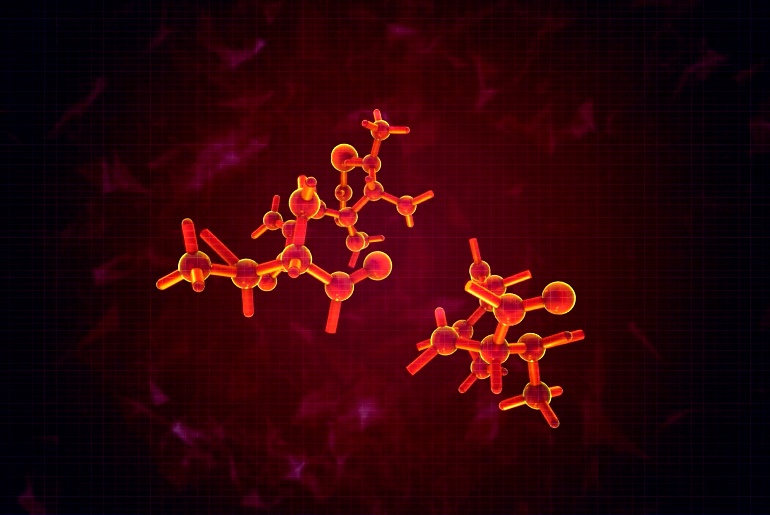Proteins, as we know, are the workhorses of our cells. They play a pivotal role in almost every cellular process, from DNA replication to energy production.
But what happens when these proteins are exposed to environmental stressors like extreme temperatures? Enter the world of stress proteins. These are specialized proteins that help cells cope with and recover from such stresses. Among the most studied stress proteins are the heat shock proteins (HSPs) and cold shock proteins (CSPs).
Heat Shock Proteins (HSPs)
A group of proteins that are produced by cells in response to exposure to stressful conditions. Think of them as the cell’s emergency response team. When things get heated, they jump into action!
Pro Tip: Did you know? The term “heat shock” originates from the observation that heat stress causes these proteins to be synthesized in large amounts.
Types of Heat Shock Proteins
Classified based on their molecular weight. The most common ones you might come across in scientific literature are HSP90, 70, 60, and 40. Each of these has a unique role:
- HSP90: Often acts as a chaperone, ensuring that other proteins are correctly folded and functional.
- HSP70: Assists in protein folding and can prevent the aggregation of proteins.
- HSP60: Found mainly in mitochondria, it helps in the folding of imported proteins.
- HSP40: Works closely with HSP70, enhancing its ability to fold proteins.
Fun Fact: The numbers in their names refer to their molecular weights in kilodaltons (kDa).
Heat Stress and HSP Induction
When cells are exposed to elevated temperatures, they don’t just sit idle. They activate a series of responses to protect themselves.
One of these responses is the production of HSPs. The primary regulators of HSP expression are proteins called heat shock factors (HSFs). When activated, HSFs bind to specific DNA sequences, leading to the transcription of HSP genes.
Cellular Functions of HSPs
HSPs are not just emergency responders; they have day-to-day jobs too. They play a crucial role in maintaining protein homeostasis, also known as proteostasis.
This involves ensuring that proteins are correctly folded, preventing protein aggregation, and assisting in the degradation of damaged proteins. In essence, they’re like the quality control team of the cell, ensuring everything runs smoothly.
Cold Shock Proteins (CSPs)

While HSPs respond to heat, cold shock proteins (CSPs) are all about the cold. They’re produced when cells are exposed to sudden drops in temperature. Imagine being thrown into a cold pool on a hot day, or entering a cold bathtub; that’s how cells feel, but they have CSPs to help them cope.
CSPs in Cold Adaptation
When temperatures drop, cellular processes can slow down or even come to a halt. But cells are resilient. They produce CSPs to help them adapt.
One of the primary roles of CSPs is in RNA stabilization. They bind to RNA, preventing it from forming structures that could impede its function. Additionally, CSPs play a role in initiating the translation of RNA into protein, ensuring that cells continue to produce the proteins they need, even in the cold.
Structural Characteristics of CSPs
CSPs have unique structural features that enable them to function efficiently at low temperatures. Unlike many other proteins that might become rigid or inactive in the cold, CSPs remain flexible and functional.
This is largely due to their specific amino acid sequences and three-dimensional structures. When compared to other RNA-binding proteins, CSPs have a distinct architecture that allows them to bind RNA molecules with high affinity.
Fun Fact: Some organisms that live in extremely cold environments, like the Arctic, have evolved to have higher levels of CSPs, giving them a natural advantage in such chilly conditions.
A Comparative Analysis

When I first jumped into the world of stress proteins, I was fascinated by the intricate dance of molecules that happens within our cells. Heat Shock Proteins (HSPs) and Cold Shock Proteins (CSPs) might sound like they’re from two different worlds, but they share a common goal: helping cells adapt to environmental changes.
Shared Features
Both are part of the cell’s emergency response team. When things get tough outside, these proteins get going inside.
One of the striking similarities between them is their role as molecular chaperones. They ensure that other proteins fold correctly, maintain their shape, and don’t aggregate. This is crucial because misfolded proteins can lead to cellular dysfunction.
Fun Fact: Did you know that both HSPs and CSPs have been found in organisms ranging from bacteria to humans? It’s a testament to their fundamental importance in biology!
Another shared feature is their induction mechanism. While the triggers might differ (heat for HSPs and cold for CSPs), the cellular response often involves the activation of specific transcription factors that upregulate these proteins.
Distinctive Characteristics
Now, while they do share some features, HSPs and CSPs are not identical twins. For starters, their induction triggers are, as their names suggest, at opposite ends of the temperature spectrum. HSPs jump into action when cells face elevated temperatures, while CSPs become active during cold stress.
Further, while HSPs primarily focus on protein folding and preventing aggregation, CSPs have a unique role in stabilizing RNA and facilitating translation initiation. This ensures that protein synthesis continues smoothly even in cold conditions.
Biotechnological and Medical Implications

Understanding these proteins isn’t just a fascinating journey into cellular biology; it has real-world implications. From medicine to agriculture, the knowledge we’ve gained from studying HSPs and CSPs is making waves.
Therapeutic Potential
Imagine a world where we could harness the power of HSPs to combat diseases. Well, we’re getting there! Research has shown that HSPs, especially HSP90, play a role in cancer cell survival.
By targeting these proteins, we might be able to develop new cancer therapies. Similarly, insights into them could pave the way for treatments for neurodegenerative diseases, where protein misfolding is a central concern.
Pro Tip: If you’re diving into the world of biotechnology, keep an eye on HSP research. It’s a rapidly evolving field with immense potential!
Environmental Adaptation
On the agricultural front, understanding how plants use CSPs to adapt to cold environments can revolutionize how we approach crop resilience. By tweaking the expression of these proteins, we might be able to develop crops that can withstand temperature fluctuations, ensuring food security in an ever-changing climate.
FAQ
What are the primary functions of HSPs in cells?
Primarily responsible for stabilizing new proteins, ensuring correct folding, and refolding proteins that were damaged due to cellular stress. They play a crucial role in protein maintenance and are found in virtually all living organisms.
How are HSPs related to cancer?
Play a significant role in cancer identification. High concentrations of extracellular HSPs can indicate the presence of contentious tumors. They are also involved in various cancer adaptations, including drug resistance, tumor cell production, and lifespan.
How do HSPs contribute to the immune system?
Play a role in antigen presentation pathways, making them indispensable components. When extracellular, they can bind to specific receptors on dendritic cells, promoting cross-presentation of their carried peptides. They can also stimulate immune receptors and are crucial in the proper folding of proteins involved in pro-inflammatory signaling pathways.
Are there any therapeutic applications of HSPs?
Yes, they have therapeutic potential in both cancer treatment and the treatment of autoimmune diseases. They can boost immune responses against tumors or induce immune tolerance to treat autoimmune conditions.
Conclusion
The dance of molecules within our cells is a complex and beautiful one. HSPs and CSPs, with their shared goals and distinctive roles, are testament to nature’s ingenuity.
They not only help cells adapt and survive but also offer us insights into potential medical treatments and strategies for environmental adaptation. It’s a reminder of how understanding the microscopic can have macroscopic implications for our world.
